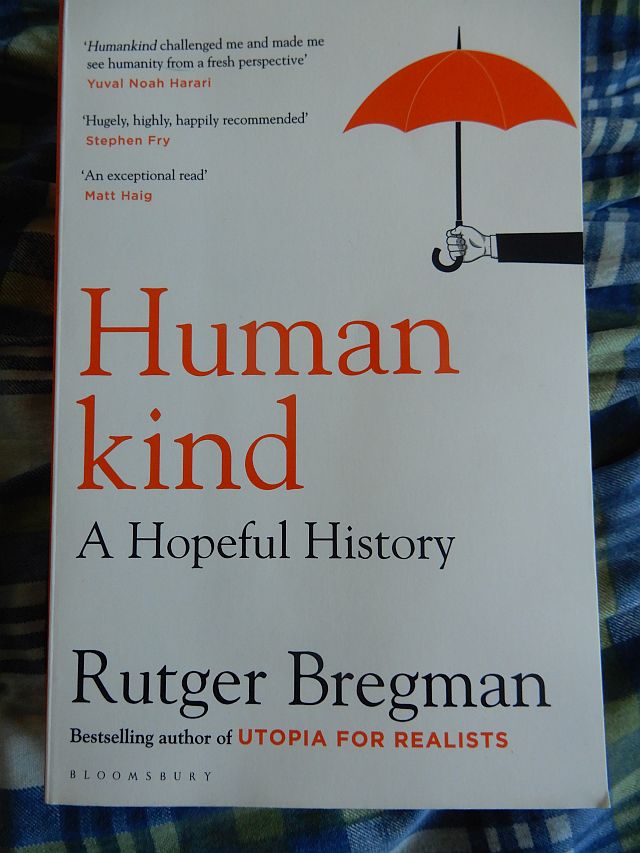
Back in the 1960s I was given a natural science text book that had Man as the one and only tool maker. This tool making thus made us different from other creatures on Earth. Jane Goodall, with her research into wild chimpanzee behavior at the time this text book was being used, proved it to be wrong.
She found wild chimpanzees taking leaves off of sticks and then using those sticks to invade termite nest so they could then eat the termites. The stick was fashioned by the chimpanzee for the job at hand therefore it was a tool. Was this programmed by nature type behavior? I believe the answer is no.
Goodall gave potatoes to wild chimpanzees so she could get closer to them. It was new food for them. Then one day Jane saw a female chimpanzee dunking her potato in a nearby stream and then eating it. Other chimpanzees came to follow her example. So why dunk a potato in a stream before eating it? Surely there was no need to clean the potato? As it turned out, the stream was salt water and so the chimpanzees were adding salt to their potatoes. This could not be programmed by nature behavior since potatoes are not grown where the chimpanzees were living. They were brought there by Goodall. In theory the female chimpanzee must have accidently dropped a potato in the stream, fished it out and liked the added taste. Was this another example of tool making? I would say yes.
Without the kind of hands we have plus more brain matter chimpanzees in the wild are limited to what they can do but they are not so limited they can’t be creative. Since the 1960s other discoveries have been made. Orangutans, in the wild, use large leaves like we do umbrellas when it rains and gorillas make their own beds to lie on and sleep on. Oh well, so much for Man being the only tool maker in existence!
Jane Goodall’s chimpanzees, in her early studies, were predominantly a peaceful lot. She thought humans could learn a lot from them in that respect. There was plenty of food and so they didn’t have to search very hard to find what they wanted. It was as close to Shangri-La as you can get for chimpanzees so they behaved as if they were in Shangri-La.
Decades later the forest where these chimpanzees were had changed. Human encroachment had decimated sections of it for farming. There was less food for them and so there was less goodwill. Chimpanzees had formed into gangs like the street gangs prevalent in some cities nowadays in the USA. Strangers were no longer accepted or tolerated. If you didn’t belong to their gang you were the enemy and could be treated harshly. So does any of this have anything to do with the way humans behave?
In Rutger Bregman’s 2020 book Human Kind - A Hopeful History he reasons that we were all better off in our hunter/gatherer stage of existence. It was only when we stayed put and built towns then cities that the dark side of our nature surfaced. When we had plenty to eat and plenty of room to move around in we were friendly because there was no reason not to be. In fact Bregman believes that it is our friendly, co-operative nature that made it possible for us to dominate the Earth and reach out to the stars.
Right now there are few hunter/gatherer tribes and most of us live in towns and cities. We can’t know and therefore care about everyone living in close proximity to us. As Bregman notes, we form groups and some of those groups, such as the Illawarra Birders, are harmless, inviting and fun. They give us a sense of belonging. Other groups are more discriminatory for various reasons. I have worked this discriminatory factor into my futuristic novel 50 Dragons and also the up and coming sequel Dragon Queen.
Night to Dawn 38 has just come out. It features my story Reg 25 in which rampant futuristic Globalists have, in their striving for equality for all, created a hell hole for everyone, especially the old who can remember a better past. It also contains stories by Todd Hanks and Lee Clark Zumpe. There are reviews by the late Tom Johnson. www.bloodredshadow.com
As for what is happening on the south coast of NSW, Australia, spring is on its way and we have already seen some beautiful young birds flying about the Corrimal and Thirroul area. The King Parrots are back to this area in good numbers. They are a delight! I find I am more hopeful in spring and summer. Not everyone is like that. After the horrific fires of last summer, we all need a much better spring and summer this go ‘round. We have had plenty of rain this winter so maybe that will help. Cheers!